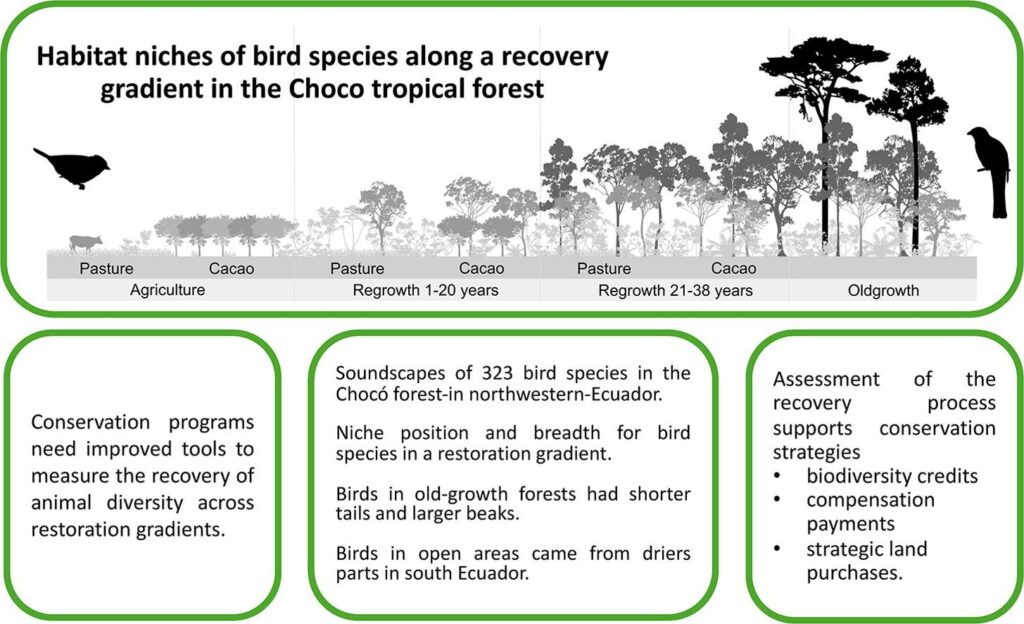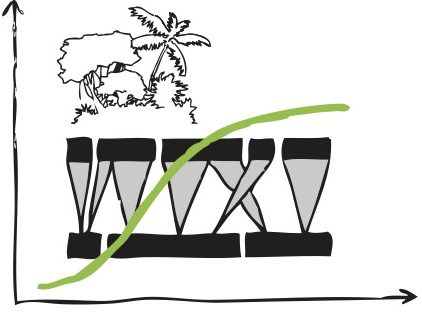Birds show a strong change in species composition when open vegetation grows back into a dense forest. And this change is matched by the species’ traits: seed-feeding species are replaced by fruit-feeding species, species with long wings and tails by those that have shorter ones. Many birds in open habitats and early regeneration stages are species that have their biogeographic centre in more southern regions in South America towards the dry and open Tumbesian forest. This change in species traits and niches was analysed and interpreted by a team around Ana Falconi, David Donoso and Jörg Müller, using the data on the birds’ occurrence along the chronosequence recorded by their sound (see Soundscape paper) in combination with trait databases and the birds’ phylogeny. Their work has been published in the journal Ecological Indicators.


